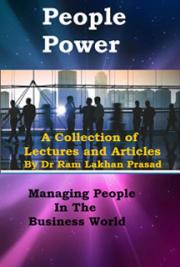Chapter 4: Conclusion
Throughout both parts of the interview section there was a clear variance between the women and men; the feel and energy of the sections were not the same. How they each saw their gender and the impact of their gender at times had common themes. However the communication styles, how the women and men felt things and the processes they went through were different. I felt that both groups expressed clear gender familiarity; the men cursing and referring to the sexual and the women expressing themselves through the interpersonal and articulating the strength they see in femininity.
Yet, it is thought provoking that the women didn’t talk about the element of sexuality in their relationships, where as the pivotal moments for the men were sexual; talk of sexuality being very present in their interviews. The experiences of the women and men concerning their gender and how they were impacted by it were not similar to me; the women, it seemed, had more space in society to question and confront their gender identities, a reason for this could be societies allowance of women to challenge gender roles more openly than men. For the men it appeared like heterosexuality and society invade their gender questioning space through re-challenging them imposing what their gender identity should be. Both M2 and M3, expressed their struggle with identifying as gay, because of the negative connotations they felt that identification had. M1 talked about how he was physically targeted due to his sexuality. For the women, they did not speak about any threatening behaviors towards them due to their sexuality and gender chal enging behavior, or any negative feelings towards them from others as the men did.
For both the women and men, the ideas of what their gender requires were tested through varying actions and questioned during numerous periods of their lives. Questioning of gender identities is something heterosexual people do not generally have to do if they do not want to tap into that aspect of themselves, the side that wants to challenge gender norms and requirements. Aspects of femininity and masculinity can be great, fun and liberating, if men and women have the strength to combine characteristics of both. The issue is when men and women are slaves to their gender: A woman feeling that she has to be beautiful always done up, hair, makeup, fashionable outfits, hyper critical of her weight; a man who feels the only emotion he can show is anger, that he has to be physically strong, intimidating, never allowing others to see any “weakness;” both feeling like their self worth is dependant on their projection and performance of gender. In the article “Sociological Research on Male and Female Homosexuality,” the authors Barbara Risman and Pepper Schwartz write about the gender non-conformity seen in gay and lesbian men and women: 52
The sociological research on gender suggests that it is untenable to presume that male homosexuals are somehow inherently and even biologically ‘feminine’ when those behaviors usually associated with women are themselves social constructs. Similarly, it becomes untenable to presume that certain lesbians are inherently ‘masculine’ when those traits used to define masculinity are themselves culturally constructed and malleable (Risman and Schwartz, 1988, p.132).
As seen through the men and women interviewed in this paper, challenging gender on many levels was a conscious choice. As M1 stated, “what are they going to do, call me ‘Queer?’ I know that.” Gender is performative, therefore the performance can change. Once the men interviewed identified themselves as gay, they started to challenge and change their ideas of masculinity and what it means to be a man, losing their gender ideals and expanding the traits they allowed themselves to identify with. For the women interviewed, it was very clear that two of them they challenged their gender identities at young ages and questioned what it meant to be female. For the other two females interviewed, they too challenged their gender identity through their journey out of heterosexuality.
In the article by Risman and Schwartz, they find that:
…same sex couples do not mimic heterosexual relationships (peplau & Cochran 1981, Peplau 1982, Harry & Devall 1978, Tuller 1978, Lynch &Reilly 1985-1986). Nor are gay couples too dissimilar from other kinds of intimate dyads (Jones &DeCecco 1982, Kurdeck & Schmitt 1987a). For example, gay men and lesbians are as oriented to steady relationships as are heterosexual men and women (Bell
& Weinberg 1978). They use their relationships as a main source of affection and companionship in much the same way as do a matched heterosexual sample (Peplau & Cochran 1981). Gay couples have as high or higher satisfaction as other couples (Dailey 1979, Duffy & Rusbult 1985-1986, Jones
& Bates 1978)… Homosexual relationships were found to have certain advantages such as role flexibility, and greater equality (Risman and Schwartz, 1988, p.133-134).
Maybe the reason for such advantages as role flexibility and greater equality are due to the gender questioning that goes on within individuals who identify as bisexual/not straight, gay or lesbian. The ability to change and alter roles according to likes and dislikes, instead of the assumption that men do this and women do that:
53
It may be that after the conventions of gender are removed, power inequities are so unflattering to both that partners are intensely motivated to avoid the costs of greater power and powerlessness alike. For example, gay men released from the family provider role do not reinvent it in their relationships; they prefer a more egalitarian and mutually responsible allocation of economic responsibility. Likewise, lesbians do not seek a partner to provide for them, they insist on economic parity (Risman and Schwartz,1988, p.135).
This idea that men do not inherently want to provide and women do not want to be taken care of directly clashes with the power dynamics put forth through the heterosexual romantic script and desire paradigm. The savior/saved dichotomy which is part of the script, is essentially reestablishing the same idea: the male savor is providing safety, the powerful man is providing power. For the woman to be saved and be taken care of physically, she has to align to a powerful man, and be taken care of through emotional strength and monetary position.
The romantic script that heterosexuals are supposed to follow lays down these dynamics as desirable.
However, Arthur Brittan, in Masculinity and Power, refers to the Reality Construction Model; this shows that a person’s gender is forever changing and reestablishing through different interactions and situations:
The reality construction model is an alternative to this biographical and developmental view of gender. It argues that gender has no fixed form, and that gender identity is what I claim it to be at this particular moment in time… Every time I see myself as a man I am doing ‘identity work’. Although, it may appear that I take my masculinity for granted, in reality I only do so because I work at it. Every social situation therefore is an occasion for identity work. Of course, it may well be that all the
‘identity work’ I do will prop up the dichotomous view of gender, but this is merely another way of saying that gender is always a construction which has to be renegotiated from situation to situation (Britten,1989, p.36)
This construction model, states that gender is renegotiated from situation to situation. This is seen through social interaction. Think about how you act in a more masculine or more feminine way depending on who you are interacting with. Does your gender behavior get more or less acute through different interactions with men or women who are more or less gender conformed? In the first section of this paper, I reference Ridgeway and Connell, in their article “Unpacking the Gender System: A Theoretical Perspective on Gender and Beliefs and Social Relations,” in which they discuss the topic of gender as a background identity, an identity that men and women internalize and 54
as a result the gender background identity impacts on what and how they do and act in different societal contexts. In essence, men and women have gender identities that are in the background of everything that they do and how they identify with certain situations. At the same time through every interaction one’s gender is redefined. This may explain how and why men and women act differently among different types of people and people of different sexes. For example a woman, who around other women is strong, outgoing, and aggressive, but once around a man, her female gender background identity of a woman, plays off the interaction with a male and his gender background identity; which leaves the woman acting more accommodating, softer and pleasing. Due to her reestablishing her gender as a female against her perceived identification of the man as male, therefore re-adjusting her gender behavior to oblige how she thinks a man should act and how a woman should act. Another example of how this works is a man who around women, feels freer to explore his more feminine side, but once around other men plays up his more masculine qualities.
This can also be seen in the romantic heterosexual script. A man around other men doesn’t open doors and protects his male friends. But once around a woman, may express his gentlemanly side, by being gentler, assisting to her needs and exerting his prowess for her to succumb to, viewing her as a woman desiring those traits. Or a woman who is strong and independent in every aspect of her life, except when she dreams of the perfect man, who in her imagination is stronger, more powerful, more intelligent than she is, and comes to her rescue emotionally, because that is what she has been taught to desire and deem attractive in a man. Women are not taught to desire effeminate men, just like men are not taught to desire masculine women. The socialization of desire plays right into the power dynamics of the man being and having more power than the woman. Even when men and women challenge their own gender, that does not mean they are challenging what they desire or what they expect from the other sex’s gender. When straight men and women interact, they are recreating what they feel is desirable for the other sex in order to be desired. Even if someone has an altered gender identity, they still may find themselves recreating these power dynamics, just in more subtle ways. The woman assuming when the man speaks, he knows what he is saying and not questioning him. The man feeling his main emotional outlet is through the woman.
For gay men and lesbian women, those roles and interactions are always up for debate and may not stay the same from day to day. They can discuss what roles are going on and who wants to fulfill 55
them and when. Since they are dating the same sex, their gender construction may not change as drastically as when a man and a women interact. If men and women replaced their gender identities of being a man or a woman to being human beings would this change the dynamic between the interactions? One could say yes, then people are changing their identities based on individual interface, not only assuming the gender roles and power dynamics they are used to playing into.
As we’ve seen, changing ones sexual orientation does not lead to a man wanting to be a woman, or a woman wanting to be a man. What it does do however, is give space to question and challenge gender norms and stereotypes. If hypothetically gender roles and power dynamics can change with or without homosexual relationships providing an alternative script, then why is the fight over gay marriage so heated? Could it be that if men were al owed to marry men and women were allowed to marry women, it would lead to a legitimization of homosexual love and relationships, and the flexibility of gender as a result of legalization? Maybe there would be more instances of men and women exploring different types of emotional and sexual relationships with people, not being as rigid in their gender views of themselves and others. If gay marriage were legal, would it make for matriarchal families? Would men leave work to raise their children? And would society accommodate this?
Perhaps, as I mentioned in the introduction, it all comes down to the seed and the patriarchal lineage. Two men trying to have a child highlights their limitations and their need for a womb; two women trying to have a child need a seed; it’s the difference of needing a woman for 9 months compared to needing a man for a half an hour, thus confronting the notion that women have men’s babies and as a result the blood line should follow the father; directly challenging the patriarchic structure. If men are no longer head of the family, then there is no need for them to have more power and wealth. But these are just ideas, thoughts that possibly can explain people’s resistance to different lifestyles outside of heterosexuality.
As for now, it is quite possible to say that we are all suffering from heterosexuality and its gender restrictions. Until we sit down and challenge ourselves and our gender identities, as well as what we expect from others concerning their gender identities, the roles we are playing, the roles we expect 56
others to play and all the power dynamics that come with these identities and roles. If these challenges aren’t made, patriarchal heterosexuality will continue with its grasp on society.
57
Bibliography
Blume, B. Libby., & Blume, W. Thomas. (2003). Toward a Dialectial Model of Family Gender Discourse: Body, Identity, and Sexuality. Journal of Marriage and Family, 65-4, 785-794. Retrieved May 11th, 2010, from JSTORE.ORG.
Bordo, Susan. (1999). The Male Body. New York: Farrar, Straus and Giroux.
Brittan, Arthur. (1989). Masculinity and Power. Oxford: Basil Blackwell Ltd.
Connell, W. R. (1995). Masculinities. Cambridge: Polity Press.
Ebert, L. Teresa. (1988). The Romance of Patriarchy: Ideology, Subjectivity, and Postmodern Feminist Cultural Theory. Cultural Critique, 10, 19-57. Retrieved May 25th, 2010, from JSTORE.ORG.
Galambos, L. Nancy., Almeida, M. David., Petersen, C. Anne. (1990). Masculinity, Femininity, and Sex Role Attitudes in Early Adolescence: Exploring Gender Intensification. Child Development, 61-6, 1905-1914. Retrieved May 11th, 2010, from JSTORE.ORG.
Hunter, Allan. (1993). Same Dorr, Different Closet: A Hetersoexual Sissy’s Coming-Out Party. In Sue Wilkinson and Celia Kitzinger (Ed.). Heterosexuality: A Feminism and Psychology Reader (pp. 160-161). London: SAGE Publications Ltd.
Katz, N. Jonathan. (1995). The Invention of Heterosexuality. New York: The Penguin Group.
58
Meyer, Stephenie. (2006). Twilight. New York: Hachette Book Group.
Ridgeway, L. Cecilla., & Correll, J. Shelley. (2004). Unpacking the Gender System: A Theoretical Perspective on Gender Beliefs and Social Relations. Gender and Society, 18-4, 510-531. Retrieved May 11th, 2010, from JSTORE.ORG.
Risman, Barbara., & Schwartz, Pepper. (1988). Sociological Research on Male and Female Homosexuality. Annual Review of Sociology, 14, 125-147. Retrived May 24th, 2010, from JSTORE.ORG.
Rothman, K. Barbara. (1989). Woman as Fathers: Motherhood and Child Care under a Modified Patriarchy. Gender and Society, 3-1, 89-104. Retrieved May 24th, 2010, from JSTORE.ORG.
Schacht, P. S. & Atchison, H. (1993). Heterosexual Instrumentalism: Past and Future Directions. In Sue Wilkinson and Celia Kitzinger (Ed.). Heterosexuality: A Feminism and Psychology Reader (pp. 121).
London: SAGE Publications Ltd.
Schifter, Jacobo & Madrigal, Johnny. (2000). The Sexual Construction of Latino Youth: Implications for the spread of HIV/AIDS. New York: The Haworth Hispanic/Latino Press.
WEB BASED SOURCES
Congress.Org. (2010, May). Congress Demographics. Retrieved May 28th , 2010, from
http://www.congress.org/congressorg/directory/demographics.tt?catid=gend&chamber=house
and
http://www.congress.org/congressorg/directory/demographics.tt?catid=gend&chamber=senate.
59
Encyclopedia Britannica. Retrieved May 20th, 2010, from http://www.encyclopediabritannica.com
Karl Maria Kertbeny. RetrievedMay 4th, 2010, from
http://www.mcm.edu/~dodd1/TWU/FS5023/Kertbeny.htm
Merriam-Webster Dictionary. Retrieved May 20th, 2010 from http://www.merriam-
webster.com/dictionary
National Organization For Women. Now.org: Electronic Reference. Retrieved October 30th, 2009, from
http://www.now.org/issues/violence/stats.html







